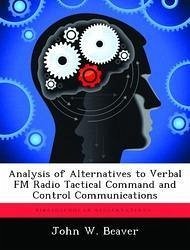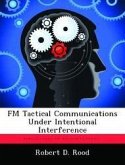Three threats to the current tactical command and control communications system are identified and examined. These threats are overcrowding the frequency spectrum, electronic warfare, and the electromagnetic pulse effect. When these threats are considered in the light of the number of FM radios employed in the armor division for command and control communications, questions arise concerning the adequacy of the command and control system used in the division. Alternatives to verbal FM radio command and control communications do exist. The purpose of this research was to identify and evaluate those alternatives. This was accomplished by using a scenario for an armor battalion in the offense in a European conflict. The doctrinal alternatives--wire, messenger, sound, and visual--were wargamed against the required communications needlines. The number of messages required for battalion operations over a 24-hour period was derived from several current studies. Although a single replacement communication means does not exist for FM voice radio, armor battalion commanders need to accomplish several actions. The significant threat posed by the proliferation of electronic devices, the electronic warfare capability of the Soviets, and the possibility of nuclear warfare on the future battlefield make it essential that commanders prepare their units to operate using the alternative means of communication. It is essential that tactical commanders train their units in decentralized operations, electronic counter-countermeasures, and integrate the alternative means of communication into training exercises. In the midst of battle is too late to train commanders and staffs in command control operations which do not include FM voice radio communication.
Hinweis: Dieser Artikel kann nur an eine deutsche Lieferadresse ausgeliefert werden.
Hinweis: Dieser Artikel kann nur an eine deutsche Lieferadresse ausgeliefert werden.








